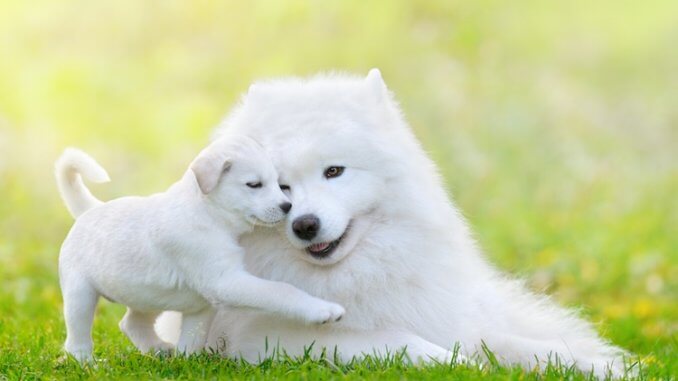
Everyone loves the Samoyed Dog. These white fluffy dogs have been conquering peoples heart since the early 19th Century.
In more recent times, these dogs have taken over the internet with their famous “Sammie smile!”
Known for their friendly faces and unique personalities, there is certainly more to this breed than meets the eye. Samoyeds are friendly dogs and make a great match for those who have fun households and lots of time to dedicate to their dog.
Does this meet your criteria? Read our 14 interesting facts to learn if this smiling dog could be the pet for you.
TABLE OF CONTENTS
- 14. Samoyeds Were First Seen In 19th Century Siberia
- 13. They Are Named After The People Who Bred Them
- 12. This Breed Was First Registered In 1906
- 11. They Are Famous For Their “Sammie Smile”
- 10. He Makes A Great Family Dog
- 9. The Samoyed Was A Herding Dog
- 8. She Has A Fluffy White Double Coat
- 7. Some Are Prone To A Kidney Disease
- 6. Their Lifespan Is Between 12 to 14 Years
- 5. The Samoyed Loves To Eat
- 4. They Can Be Mischievous Puppies
- 3. They Are Stubborn and Hard To Train
- 2. This Breed Likes Someone At Home 24/7
- 1. Samoyed Puppies Are Expensive
14. Samoyeds Were First Seen In 19th Century Siberia
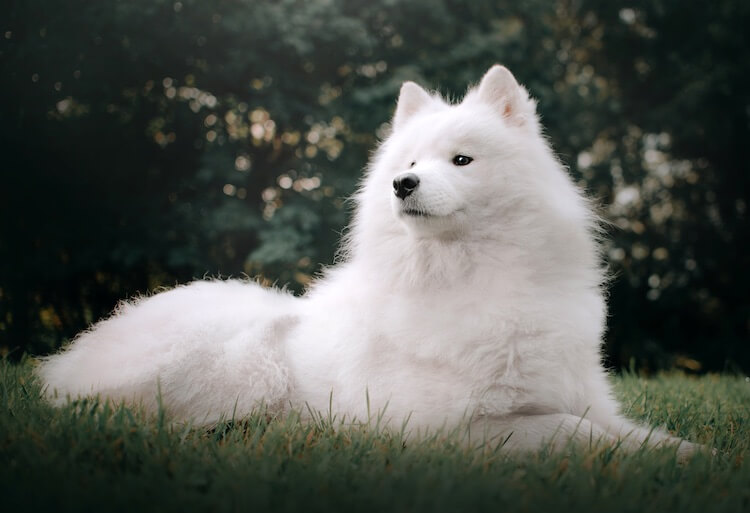
This canine was first seen in the 19th Century in Siberia.
They are decedents of the Nenets Herding Laika (ancient Russian hunting dogs). Laika dogs are hunting dogs used for a variety of working roles (e.g. sledding, scenting and hunting).
Hunters bred the Samoyed as a specialized reindeer herder. Their white coat made them favorable amongst hunters as it allowed them to easily camouflage in with the snow.
13. They Are Named After The People Who Bred Them
This dog breed is so synonymous with Nenets (northern arctic reindeer hunters), that they are named after them.
As well as being the name of this breed, Samoyed is the name of the nomadic people who lived in northern Siberia as reindeer herders.
Despite their Siberian origin, this breed can be seen across the globe and they were first seen in America in the early 20th century.
12. This Breed Was First Registered In 1906
The Samoyed is the 59th most popular dog breed in the states.
They were first registered to the American Kennel Club in 1906 and were immediately popular. The Samoyed Club of America formed in 1923 to promote the health of this breed through responsible breeding and consistent breeding standards.
In modern times, this breed is used less frequently for reindeer hunting and is more often seen as a companion breed. They are loving and loyal family canines, making great companions for all.
11. They Are Famous For Their “Sammie Smile”
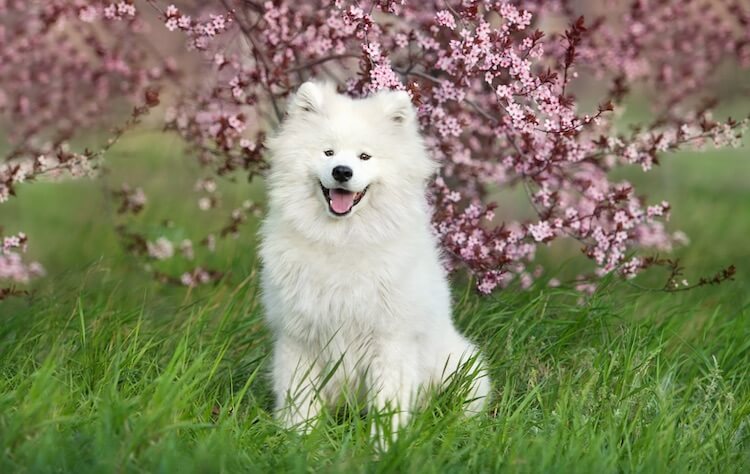
Famous for their “Sammie smile”, they are known to be very friendly and inquisitive dogs. The Samoyed’s gentle and stable temperament is iconic. This is one of the reasons why so many families adopt this breed.
In addition to their “Sammie smile,” they are also known for their loud barks! Not only are these dogs are avid barkers, but they are also quite often found howling (occasionally, they even like to sing too).
Although they usually bark at new people (because of their hunting pedigree), the Samoyed is not known to be aggressive at all.
In fact, these dogs are known for their friendly and loving personalities. Once they have met someone, all hostility goes out of the window, and they turn into a rather cuddly canine.
10. He Makes A Great Family Dog
As a result of their friendly and caring temperament, the Samoyed makes a fantastic family dog.
They get on very well with children and generally have a very patient temperament.
It is important that children are taught how to interact with your dog and are never left alone for any period of time.
When Samoyeds are bored of entertaining children, they will generally let their owners know.
Traditionally, a bored dog will either bark excessively or begin to dig (in your garden or in your couch; they aren’t too fussed about where).
To combat this, you should give your smart dog lots of things to do. Enrichment puzzles like food toys will keep your dogs occupied and their brains busy, you can also try trick training.
9. The Samoyed Was A Herding Dog
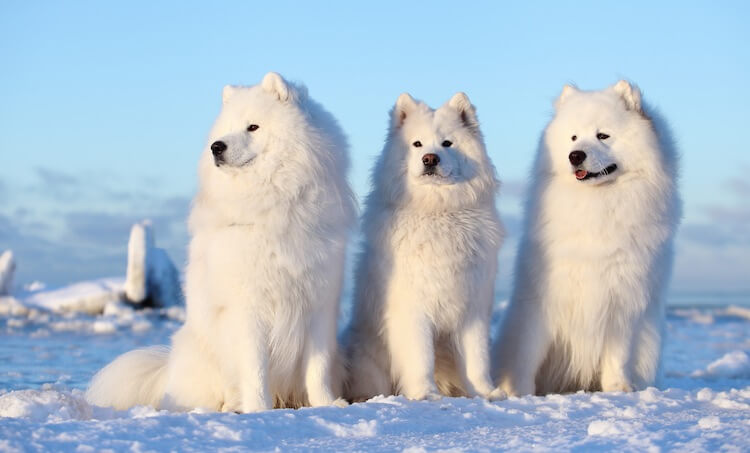
Because of their herding roots, Samoyeds are adventurous dogs and love to spend their time outdoors, hiking with their family. They enjoy new experiences, be that going on new walks or playing with a new toy.
Provided they are well socialized as puppies, these dogs will thrive on novelty.
The Samoyed dog breed is known to have lots of stamina too; occasionally, these strong dogs would be used alongside Siberian Huskies to haul sleds for travelers.
They need a reasonable amount of exercise each day:
- On average an adult will need around sixty minutes of exercise each day. This ideally should be split into two shorter walks to allow energy dissipation throughout the day (one in the morning and one in the afternoon).
- You should walk your puppy for much less. Approximately five minutes for every month they’ve lived. If your puppy is six months old, they need approximately 30 minutes of exercise each day. It is important not to over exercise younger dogs. Their growth plates will not have fully formed, too much exercise at this point can cause musculoskeletal issues in later life.
When outside, these dogs are quite happy just wandering through forests, or even a trip to the dog park is enough to bring out their smile.
If you did want to compete in a canine sport with your dog, this breed excels at herding trails. Other sports they are known to enjoy include: mushing, flyball and agility.
8. She Has A Fluffy White Double Coat
Apart from their famous smile, this dog is also renowned for their white appearance. Their fluffy white double coat is striking. Most dog owners will recognize them by this feature alone.
Their thick double coat requires a lot of regular grooming.
They shed incredibly heavily, and so this coat will need daily brushing to remove the loose fur and prevent matting. Consequently, it important that owners are able to regularly brush their dogs coat and are willing to clean up the hair afterwards.
This breed is pretty good at remaining white all year round, you should only bathe them if they roll in something muddy!
The defining features of the Samoyed are their:
- Small, triangular ears
- Slightly too short snout
- Curly tail
These three features give them their fox-like face; something which often attracts people to the breed.
Considered to be a medium to large sized dog, this breed stands between 19 and 23.5 inches. Males tend to be slightly larger than females with a typical weight of anything between 35 and 65 pounds.
7. Some Are Prone To A Kidney Disease
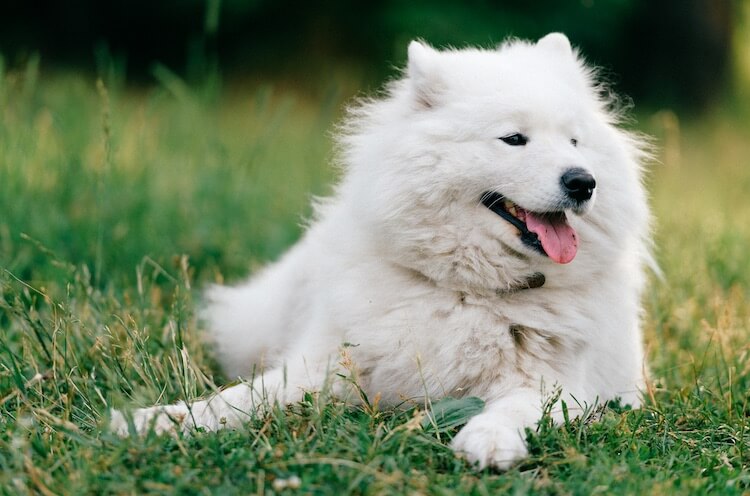
Samoyed hereditary glomerulopathy is a kidney disease common in this breed.
This is a sex-linked genetic condition, carried by the female X chromosome. Although the disease is carried on the female chromosome, the condition is actually more severe in male dogs.
The condition presents differently between sexes:
- Carrier females show no symptoms until around three months of age but will generally not suffer from kidney failure. Instead they will present with proteinuria, or excess protein in the urine.
- Males affected with the condition will present differently from females. Males show symptoms at two to three months of age. Their symptoms will start with proteinuria and weight loss, but this will progress onto hypercholesterolemia, at around nine months of age.
The final progression of hereditary glomerulopathy, at around a year and half, involves kidney failure, hearing loss and death.
Unfortunately, while the condition can be treated with medications, there is no cure.
As the condition is genetic, it is possible to test both the mother and father of a potential litter to see if they are carriers before breeding.
6. Their Lifespan Is Between 12 to 14 Years
Unfortunately, in addition to breed specific illnesses (e.g. hereditary glomerulopathy) they are also prone to several other health conditions, the most prominent of which is diabetes.
As a breed, they are incredibly prone to developing diabetes. Unneutered females being the most at-risk group. Like humans, diabetes cannot be cured, but it can be managed with a good diet and insulin injections.
Samoyed dogs are also prone to hip dysplasia (this is common with most large breeds). Hip dysplasia is categorized as a malformation of the hip joint and will usually be diagnosed between 12 and 18 months of age.
Unfortunately, there is no cure for hip dysplasia, however it can be treated, depending on severity, either by anti-inflammatory medication or surgery.
Finally, this breed is often prone to environmental allergies, which can present as a skin condition.
There are many types of allergies including: insect bites, seasonal allergies or sensitivities to household products. It is possible to medicate for an allergy using antihistamines, although depending on the type of allergy it may be easier to simply remove the allergen from the environment.
Despite these health concerns, Samoyeds often live long and healthy lives, typically living between 12 and 14 years old.
5. The Samoyed Loves To Eat
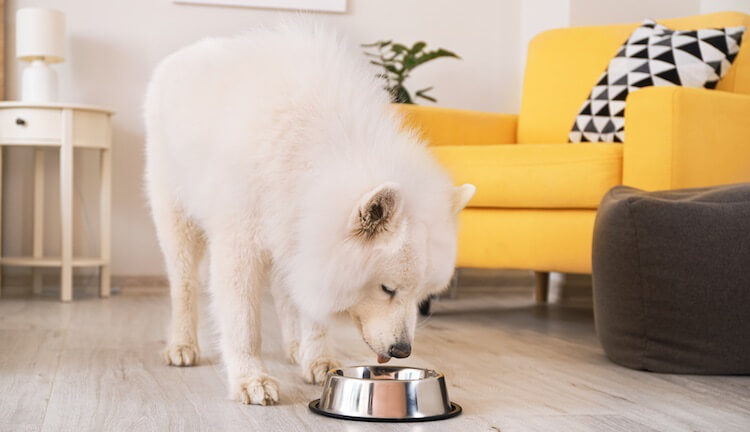
There is a lot of conflicting advice from owners about what to feed this breed. Most of the confusion comes because of their herding past in Serbia and Russia.
Ultimately, regardless of if you feed wet, dry or raw food, they need a balanced diet of approximately three cups of high-quality food.
For an adult dog, this should ideally be split into two meals of 1.5 cups.
If you are planning on doing some training with your dog during the day and are using food as a reward, remember to factor this into how much you are feeding.
When feeding wet or raw food, remember to take extra care with your dog’s teeth, as wet food can cause teeth or gum issues if not cleaned properly.
4. They Can Be Mischievous Puppies

Samoyed puppies can be quite mischievous and will often push boundaries to understand your rules.
It is important, as their owner, to decide on the rules for your puppy before bringing them home:
- Will they be allowed on the sofa?
- Will they be allowed on the bed?
- Where will they sleep?
Rules help to promote boundaries and a health relationship between you and your dog. They are an important consideration, as consistency will be key for your little canine.
3. They Are Stubborn and Hard To Train
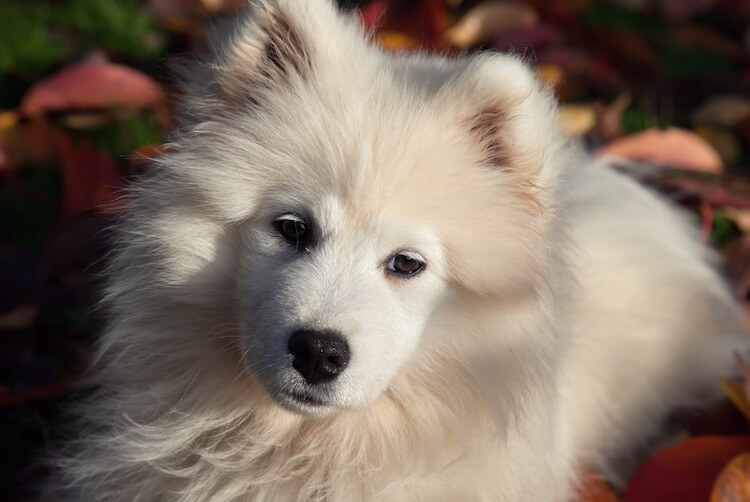
As adults, they are incredibly intelligent dogs who love to learn. However, this does not mean they lose their mischievous streak. Because of this, they are not recommended for first time owners.
Regarding house rules, positive and consistent training is key to unlocking your dog’s potential.
If not kept busy, they can get bored very quickly. Trick training can be an excellent way to keep your dog’s mind busy. As well as this, training your dog to self-entertain, with tasks like a settle, can be very useful for some owners who may need a break.
They can be somewhat stubborn and hard to train, but once they decide to please you, they will work as hard as they can to do so.
It is important to never use physical discipline or attempt to punish your dog. Samoyeds are loving and loyal dogs, and any perceived punishment will only damage your relationship with your dog.
2. This Breed Likes Someone At Home 24/7
Traditionally Samoyed dogs were something of a village dog, they would live with hunter’s families. As a result they love to live in homes where there is someone on hand all the time.
This breed enjoys the company of people and loves to be involved in whatever is happening, from getting the mail to eating dinner.
They do not generally do well with being left for extended periods, and so this may be something you need to work on.
Samoyeds do best with experienced owners. Someone who can understand these complicated dogs is essential.
Males are often more temperamental than females, and so first time owners should look for a female rather than a male puppy.
1. Samoyed Puppies Are Expensive
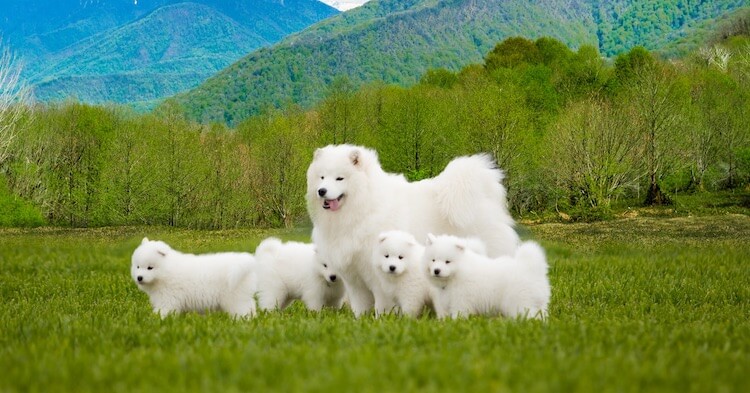
Females only go into heat every eight months, as opposed to the average six month cycle most females go through. Known to be fun and cheeky dogs, on average, there are between four and six puppies in each litter.
Samoyed puppies can be very pricey, averaging between $1,000 and $3,000 USD.
This price will vary massively dependent on breeder and pedigree. For example, if one or both of the parents is a herding champion, this will add significantly to their price.
What Do You Think About Sammies?
The sunny Samoyed is a great match for any owner looking for a village dog with lots of energy.
Like some breeds, this dog will not blindly follow their owner. Because of the independence gained from being a Russian origin herding dog, they go where they please, doing what they deem as important.
For a potential owner, this breed can be a lot of work! They need lots of grooming to keep their coat pearly white, as well as lots of physical and mental exercise to keep their clever brains busy and plenty of patience for training.
Do you have a super Samoyed at home? Are you thinking about getting one? Leave us a comment about this brilliant breed in the comments below.

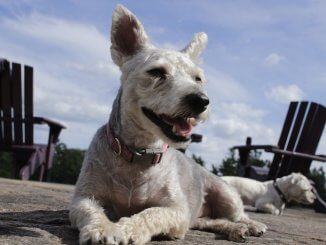
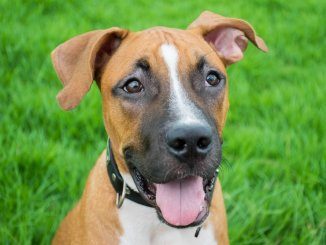
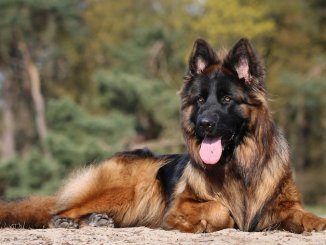
A friend of my daughters is living with us temporarily and she said she had a white siberian husky. After the dog moved in I did some research because there were things about him that didn’t fit the husky description. I believe he is a samoyed or husky samoyed mix. He sheds like crazy even though he gets a thorough brushing everyday. Also he has a tail like a samoyed and he is solid white. He is mostly an inside dog and he seems to be more attached to my husband than his owner. This is her first dog and she would be much better off with a calmer dog who does not need the exercise and maintenance that samoyeds need. He was left alone a lot before he came here and my husband and I are home most of the time because we are retired and both have cancer. We live with our daughter and son-in-law who work from 4pm until 2am and unfortunately don’t have the time for their animals so we enjoy taking care of the cats and 2 dogs. The only complaint I have is the samoyed chases our 2 cats. One cat gets stressed easily and has a severe kidney infection because of it. With the vet’s help, we are trying to remedy this problem. I am going to getsome calming diffusers for cat and a calming collar for dog and hopefully that helps. Our poor cat is miserable and stays in hiding. Of course I would appreciate any suggestions that might help.
I too adopted a dog which I was told was a 2 to 3 year old Siberian Husky mix but did some research and believe he has Samoyed parentage. He was a handful from the minute I brought him home. Because of several issues, including Covid in our family I couldn’t get him to the dog park. Now I take him daily for at least an hour. He has some favorite dog friends (his pack) and likes their owners, too although he will ignore me almost the whole time we are there. I think this is because he knows I am the one who takes him home and he won’t want to go. He is a fast runner and usually leads the pack. He doesn’t like any other dog to get in front of him no matter their size. I love him to pieces even though he is very insistent when he gets an idea in his head. I try to remain calm and consistent with him and never ever hit him or raise my voice much. This is because he seems to “read” me and know if I am upset at what he is doing so there is no need to yell at him. I am home all day and usually take him in a crate in my jeep. He hates going in the jeep on the trails though. My biggest problem is his chewing up every thing made of paper or cloth. I buy him things to chew in and he uses them but if he can, he sneaks a washcloth or bath or kitchen towel and chews of big pieces. I’ve learned to keep things up until he is older. He is not teething. The vet says he is past that.
All in all, I concur with the article in that a first-time. Owner would have a difficult time. I’ve had Anita brothers from puppy hood and a German Shepherd/Rotty so I have had quite a bit of experience. The most important advise is to exercise and remain calm and consistent.